In Part 1 of this series, we covered the principles of playability, width, options, and strategy in golf course design. Now we’re delving the art of routing—that is, the discovery, linking, and sequencing of golf holes on a piece of land. If this process is well executed, the end product has variety from hole to hole and naturalness in appearance.
Routing separates great architects from merely good ones. If you gave 30 firms a crack at the same site, you would get 30 different plans—but you would be lucky to receive even one that took advantage of the property’s best features and avoided repetition and kept artificiality to a minimum. Only the most skilled architects can meet those three criteria at once.
Routing
There are 118 holes here, and all I have to do is eliminate 100. -Perry Maxwell (on seeing the Prairie Dunes property)
To route a golf course is to determine the location and order of the holes. Simple to define, hard to do. Often the process entails numerous tours of the site, a detailed study of topographical maps, and a great deal of trial and error—all done with the intention of discerning how best to use the land and its natural features.
Ideally, the architect gets to work with a large property and to select the best terrain for golf.
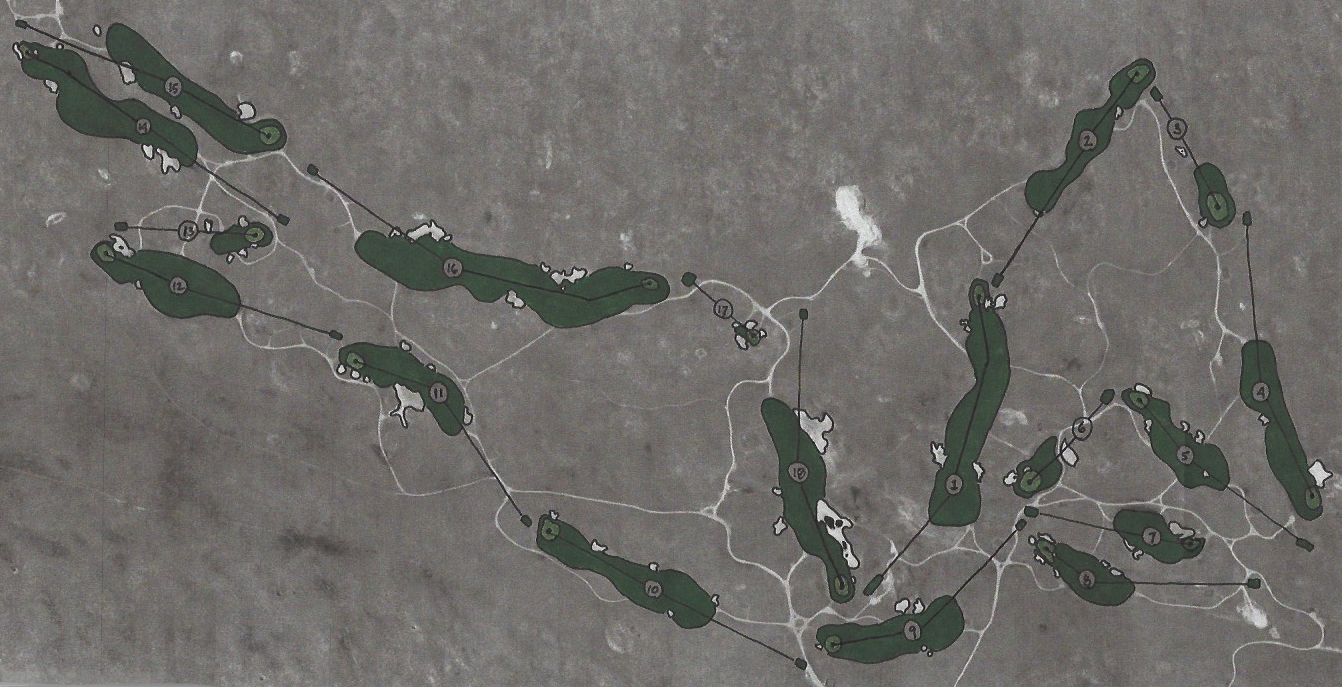
In designing Sand Hills Golf Club, Bill Coore and Ben Crenshaw were given 10,000 acres of land and allowed to choose where to build 18 holes. Illustration: Jason Way
These days, architects usually face more constraints, having to route their courses around housing developments or environmentally sensitive areas. Sometimes the best land goes to the clubhouse. No matter the limitations of the property, though, there are some basic principles that tend to produce the best golf course routings:
Maximize natural features
The most basic—yet perhaps most difficult—aspect of routing is recognizing the best natural features of a golf property and getting the most out of them. Even the least promising sites tend to have something that a course can highlight.
At Blue Mound Golf and Country Club, Seth Raynor started with a mostly flat stretch of land near Milwaukee. In the back corner of the property, however, there were considerable elevation changes. So in that spot, Raynor laid out a downhill Short hole with a cathedral in the background and a thrilling par 4 that plays uphill to a punchbowl green. They are among the most memorable holes on the course.
-
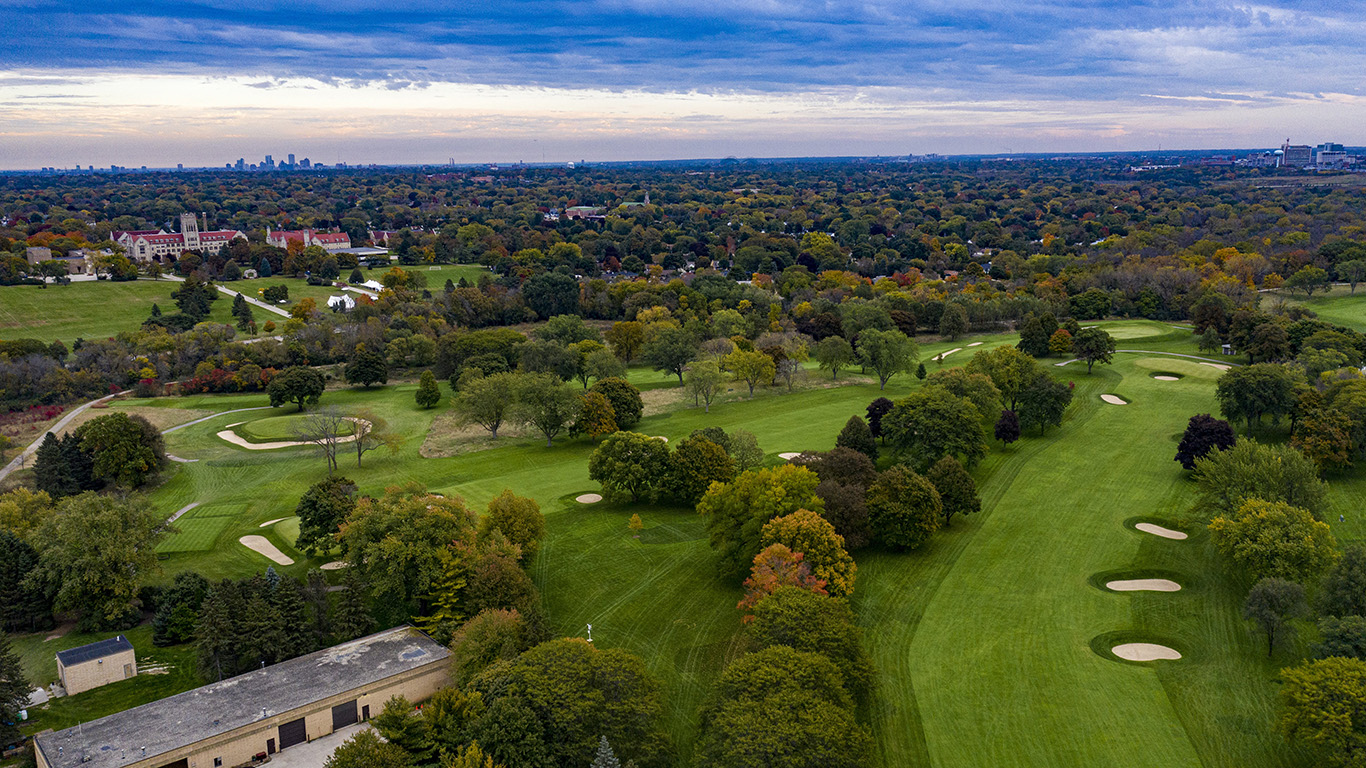
A high view of Blue Mound. The 7th hole is far left, and the 8th is in the back, along the edge of the property. Photo credit: Andy Johnson
-
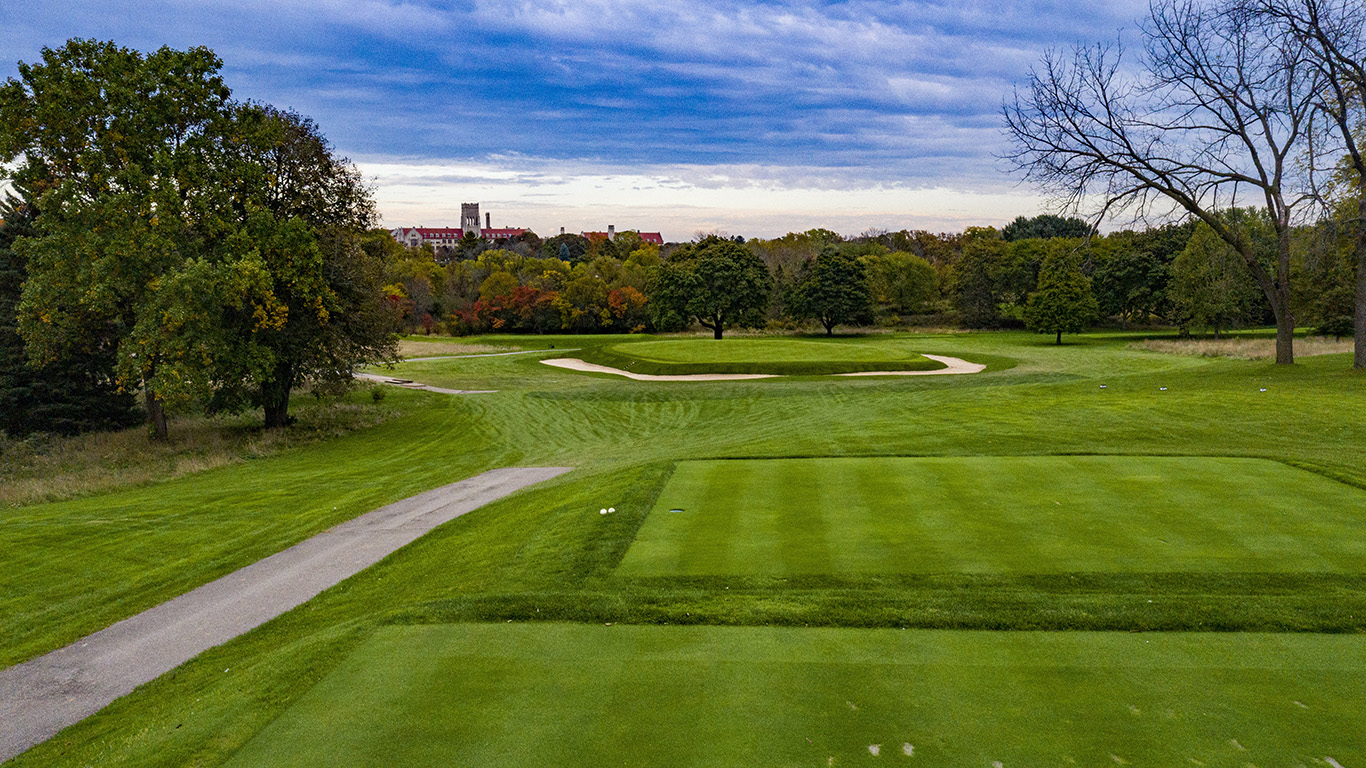
The 7th hole at Blue Mound. Photo credit: Andy Johnson
-
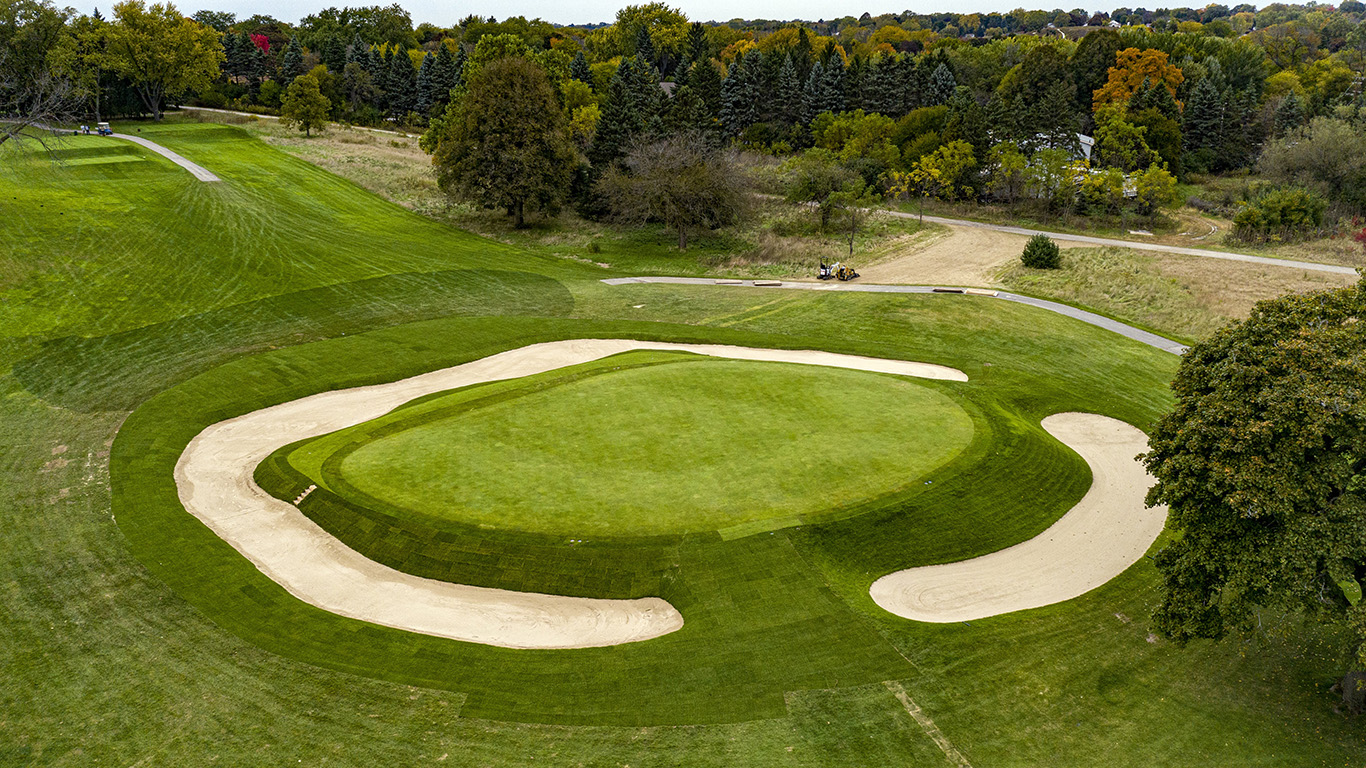
The 7th green at Blue Mound. Photo credit: Andy Johnson
-
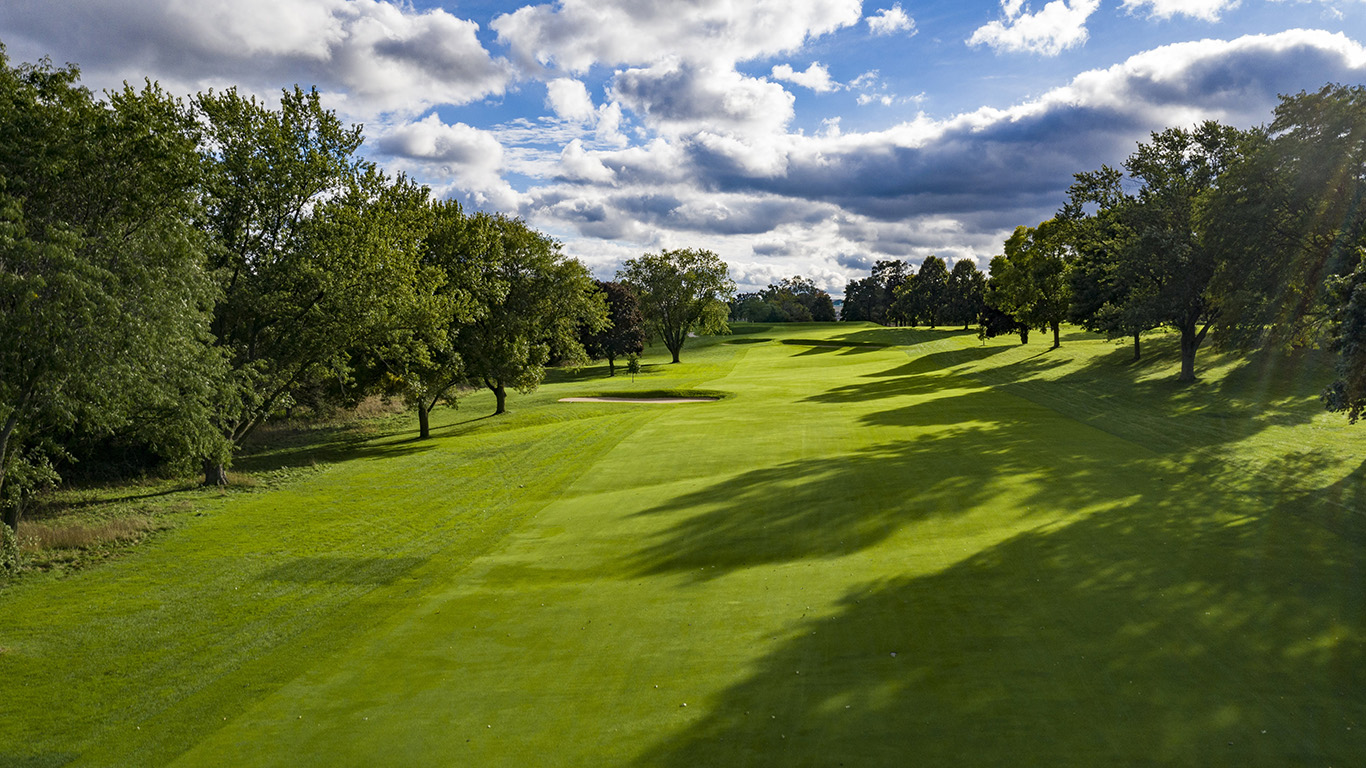
The 8th fairway at Blue Mound. Photo credit: Andy Johnson
-
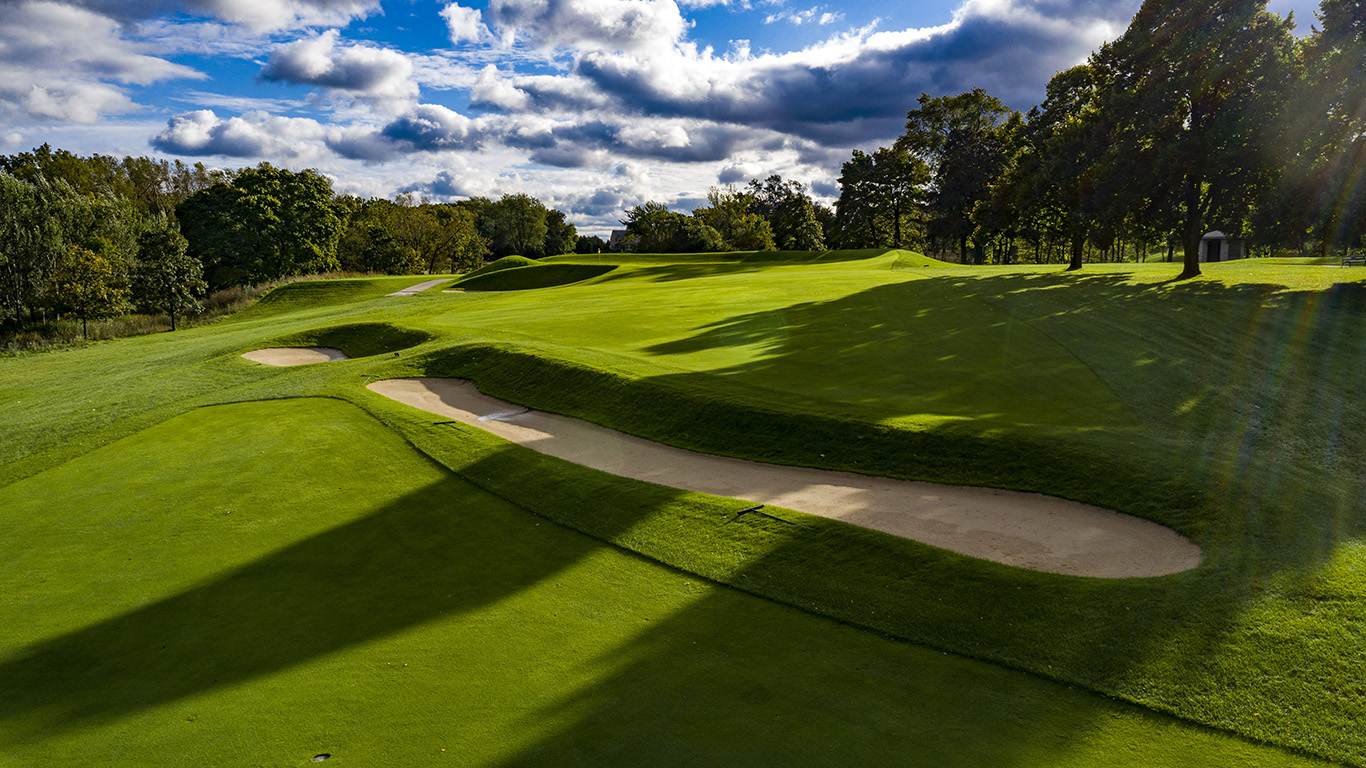
The approach to the 8th green at Blue Mound. Photo credit: Andy Johnson
-
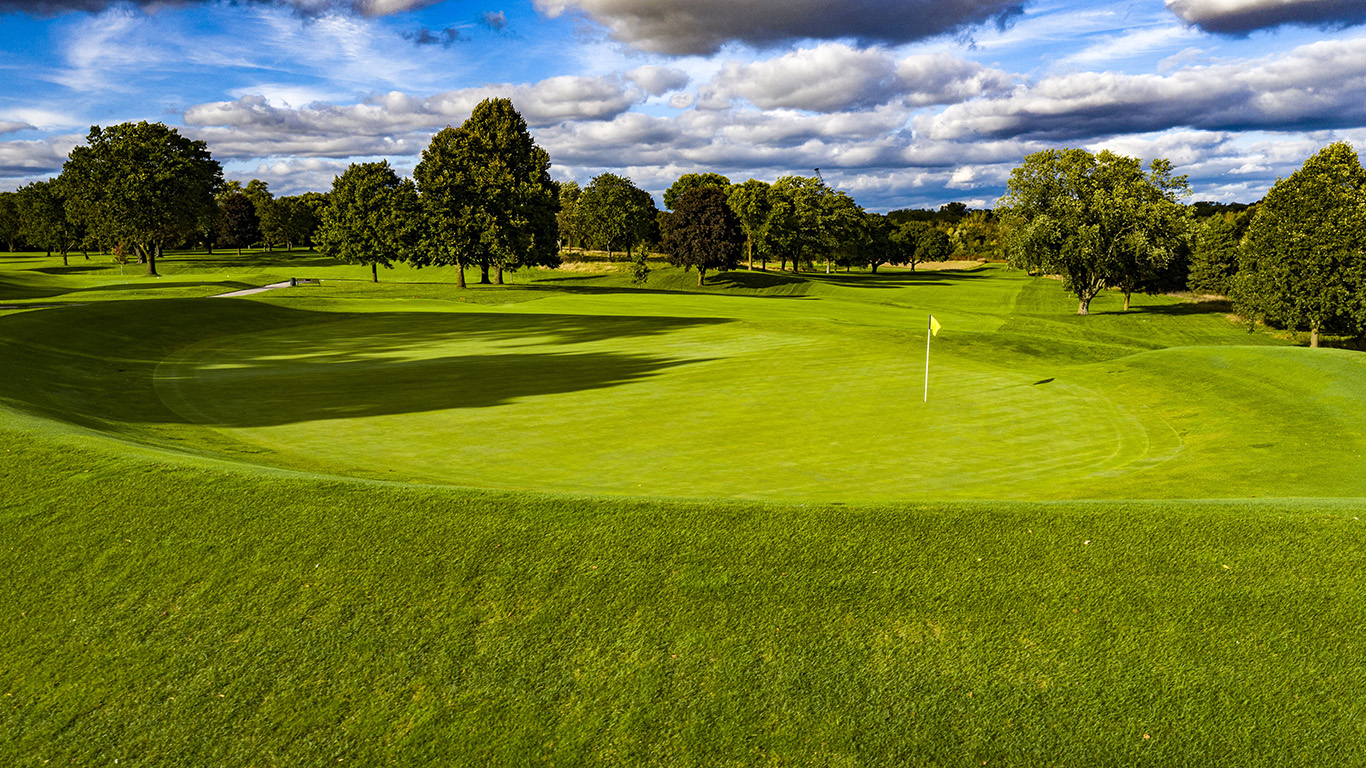
Make the walk enjoyable
Walking is fundamental to the roots of the game and, for many people, central to their enjoyment of golf. So when architects lay out their courses, they should consider the experience of the walking golfer. This means, for one, keeping green-to-tee treks as brief as possible. But if a long transition is necessary, it should offer its own rewards. Consider the walk from the 11th green to the 12th tee at Pacific Grove Golf Links. Few would want it to be shorter.
One of my favorite green-to-tee transitions anywhere: 11 green to 12 tee at Pacific Grove. pic.twitter.com/Wv38FrOZTY
— Garrett Morrison (@gfordgolf) December 28, 2018
Tell a story
The best golf course routings are well-told stories; they have a sense of drama. They go through sequences of tension and release, of thrills and lulls. In order to keep the golfer’s attention, they need variety. Eventually they arrive at a climactic moment—and either end there (like Pebble Beach) or settle down for a quieter conclusion (like Cypress Point).
The storytelling dimension of routing is difficult to describe, but you know it when you feel it.
Finally, here’s one commonly cited principle of routing that I do not find important…
A balanced scorecard
Sometime in the middle of the 20th century, the golf world became convinced that a real golf course needed to have a par of 72 with two par 3s and two par 5s on each nine. I wish we could leave that idea behind us, because it often results in poor design. It distracts architects from the crucial purpose of using the land well and leads to courses that feel superimposed rather than found.
A great routing will never force a par 4 to be par 5 just for the sake of the scorecard. Thank goodness, for instance, that Donald Ross‘s Wannamoisett Country Club remains a par 69 to this day. It’s wonderful as is, and would not be improved by moving a couple of greens or tees back 100 yards.
Fortunately, today’s most influential golf course architects are challenging popular notions of the “championship course.” Tom Doak’s Pacific Dunes and Coore & Crenshaw’s Cabot Cliffs, two of the best designs of the past 20 years, both have non-traditional setups. Pacific Dunes has one par 3 and one par 5 on its front nine, and four par 3s and three par 5s on its back. Nos. 10 and 11 are back-to-back par 3s, and they’re spectacular. At Pacific Dunes, Doak allowed the land rather than preconceived notions about par to dictate his choices.
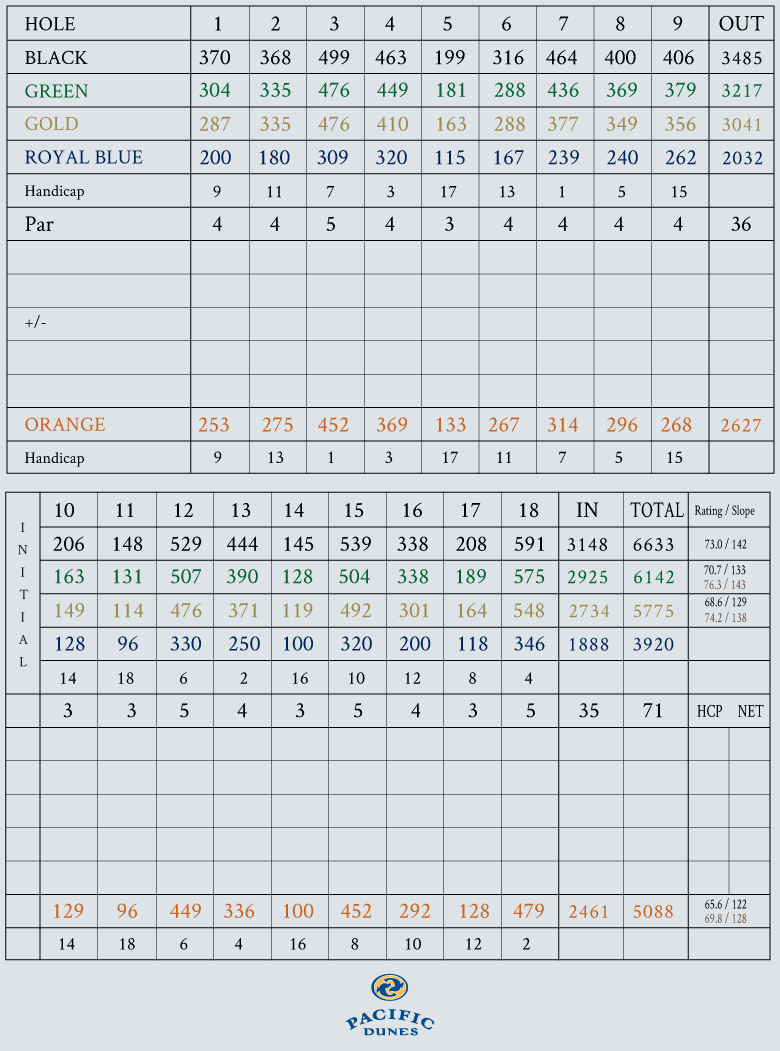
Pacific Dunes scorecard
At Cabot Cliffs, golfers face six par 3s, 4s, and 5s—an unconventional path to a conventional par of 72. Like Doak, Coore & Crenshaw created a plan that suited the terrain rather than forcing the terrain to suit a plan.
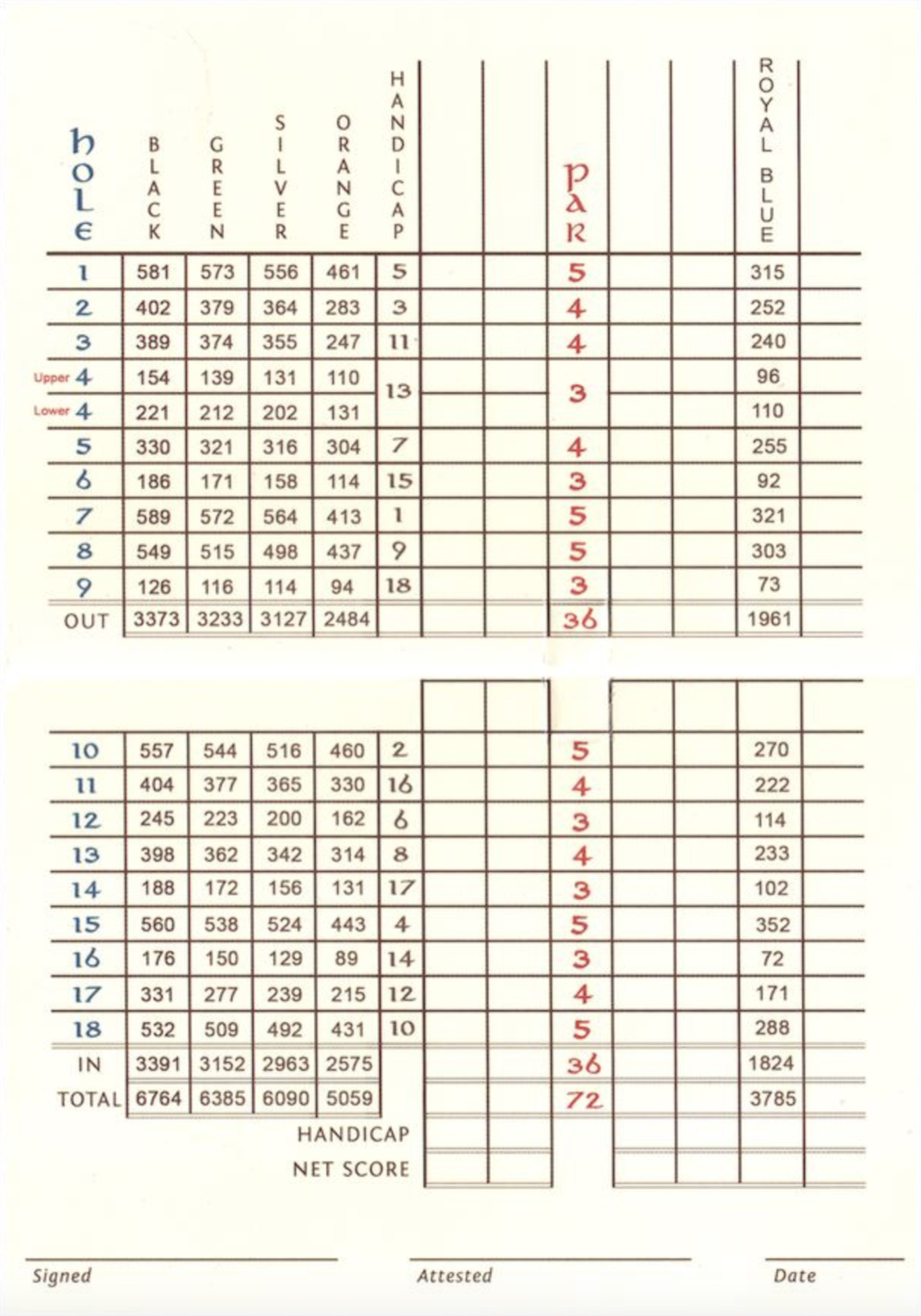
Cabot Cliffs scorecard
Variety
How deadly dull are two or three holes of the same character when they follow each other! A drive and pitch followed by another drive and pitch is a good deal like serving a watery pudding after a watery soup! –Robert Hunter
Think of what it’s like when you play two holes in a row of roughly the same length. Or three holes in a row that require right-to-left shots off the tee. Or a course where you hit the same club on all of the par 3s. You sort of lose interest, right?
This is why variety is so key in golf course design. The greatest courses hold the player’s interest by continually changing things up in at least some of the following ways:
Uses of topography and wind
We’ve all played courses where the holes simply go back and forth on a rectangular site. The problem with those routings is repetition: the holes use the terrain in similar ways over and over, and relate to the prevailing wind in a predictable manner.
In contrast, consider Donald Ross’s routing at Seminole Golf Club. The property is roughly rectangular (trapezoidal, to be specific) and has two prominent landforms: ridges along the western and eastern edges. Ross’s holes are constantly changing direction in relation to the wind and finding new ways to use the ridges—climbing them, diving off of them, running alongside or on top of them. It is a varied, continually engaging challenge.
Lengths of holes
A round of golf should examine a golfer’s entire skill set. At the very least, therefore, a course should ask the player to use as many different clubs and tactics as possible. On the most basic level, a short par 3 tests the wedges, while a long par 3 tests the long irons, hybrids, or fairway woods. Par 4s and 5s of various lengths can add more complexity. For instance, a short par 5 can measure a player’s appetite for risk, while a long par 5 can emphasize strategic play and an ability to find angles.
An aspect of the art of routing is not only creating a mixture of holes but also making sure that similar holes do not appear in succession. It’s unavoidable that a course will have a few holes of approximately the same length; the architect should just take pains to separate them. The most boring courses I’ve played have too many back-to-back-to-back 350- to 400-yard par 4s.
For a design that has exceptional variety in its par 3s, I’d point to another Midwestern Seth Raynor design. The four one-shotters at Shoreacres play to 215, 170, 130 and 190 yards, each examining a different section of the player’s bag.
-
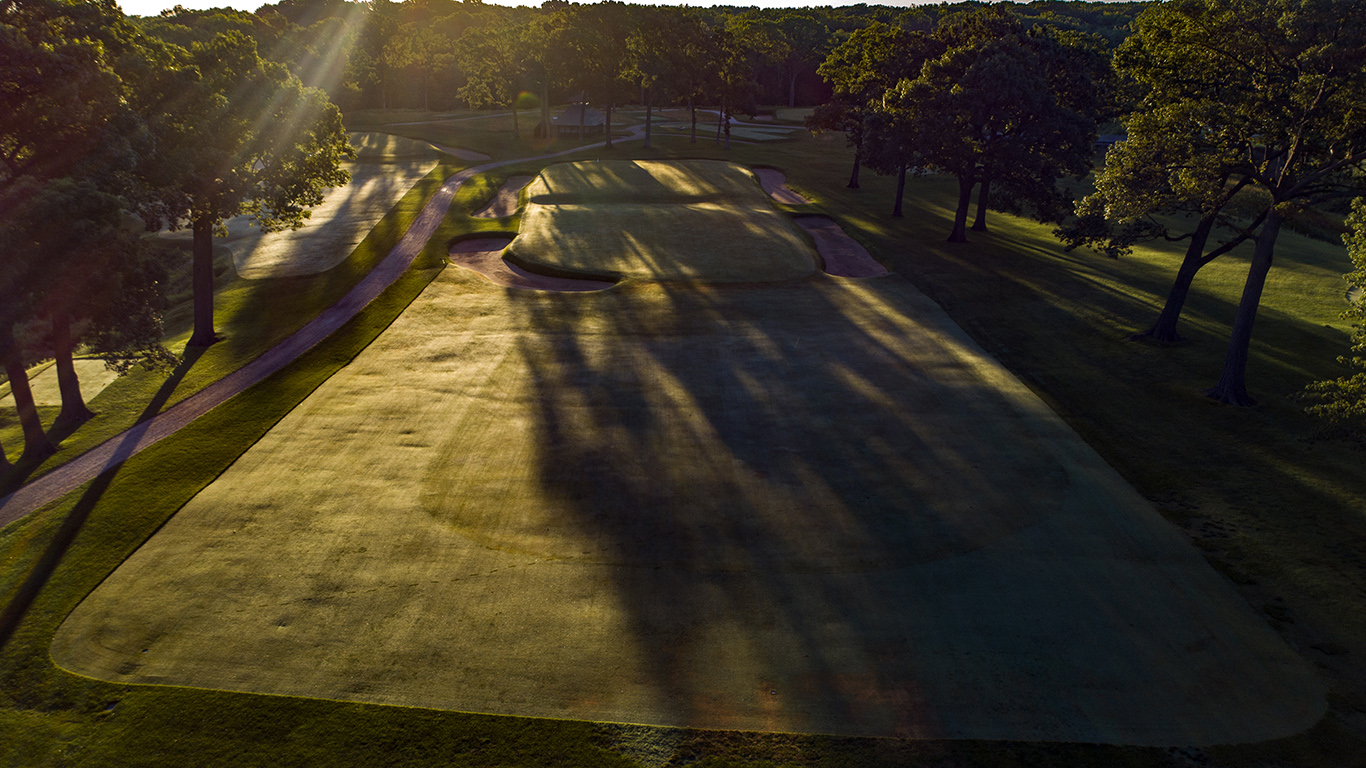
The 6th hole at Shoreacres. Photo credit: Andy Johnson
-
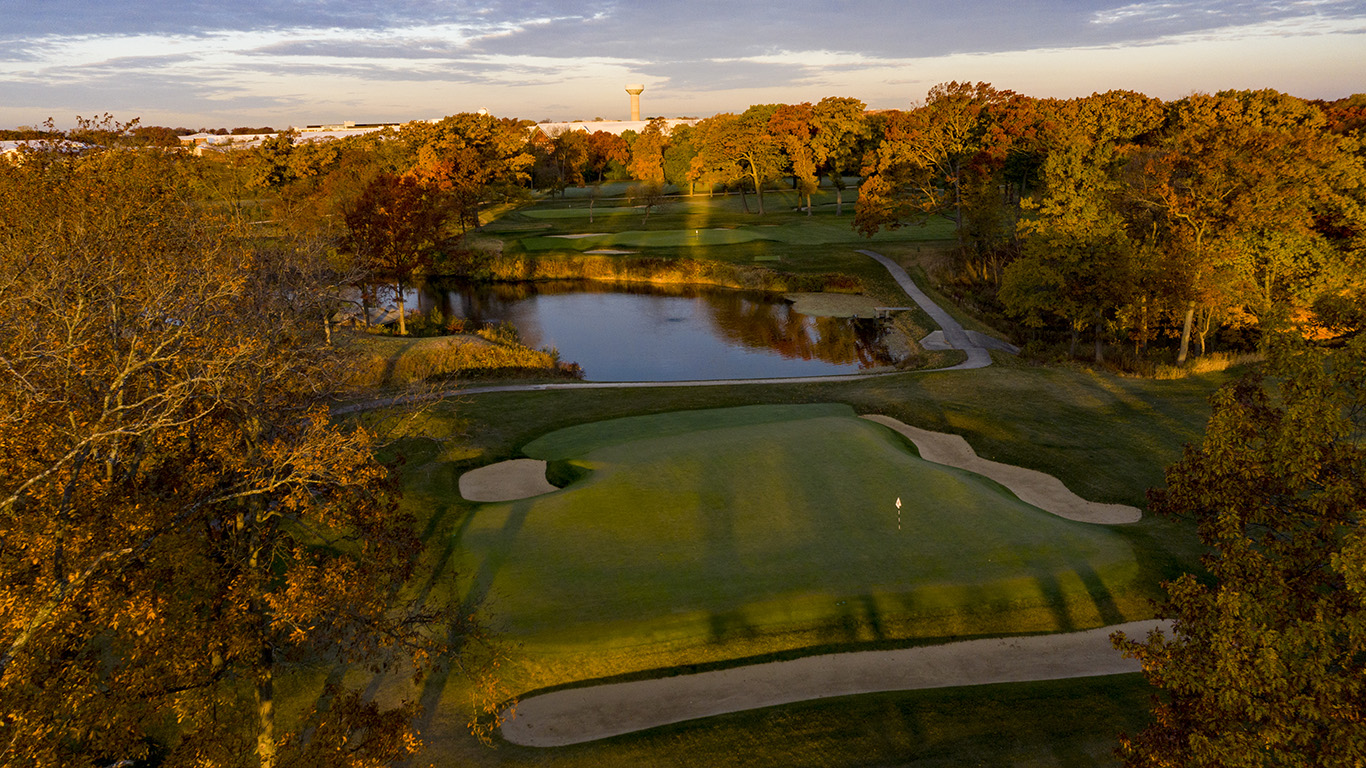
Behind the 8th hole at Shoreacres. Photo credit: Andy Johnson
-
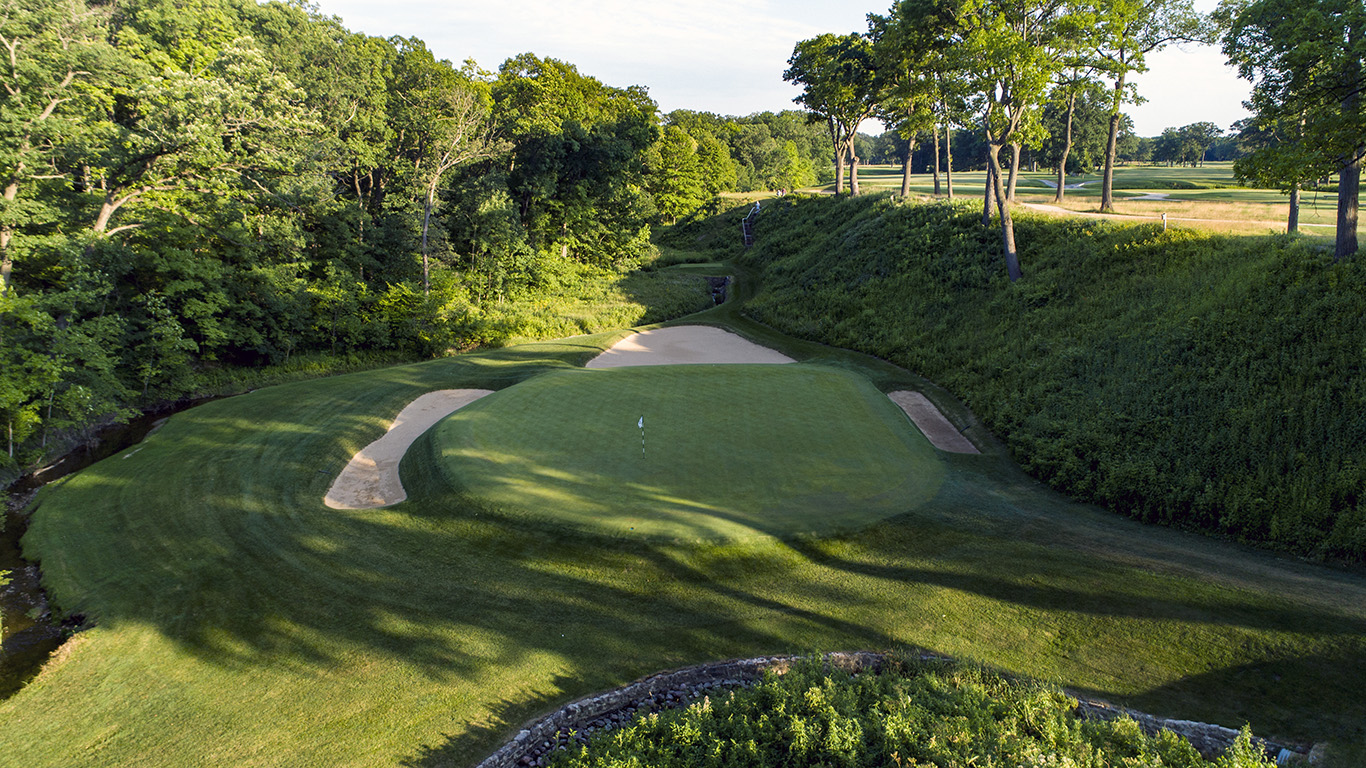
Behind the 12th hole at Shoreacres. Photo credit: Andy Johnson
-
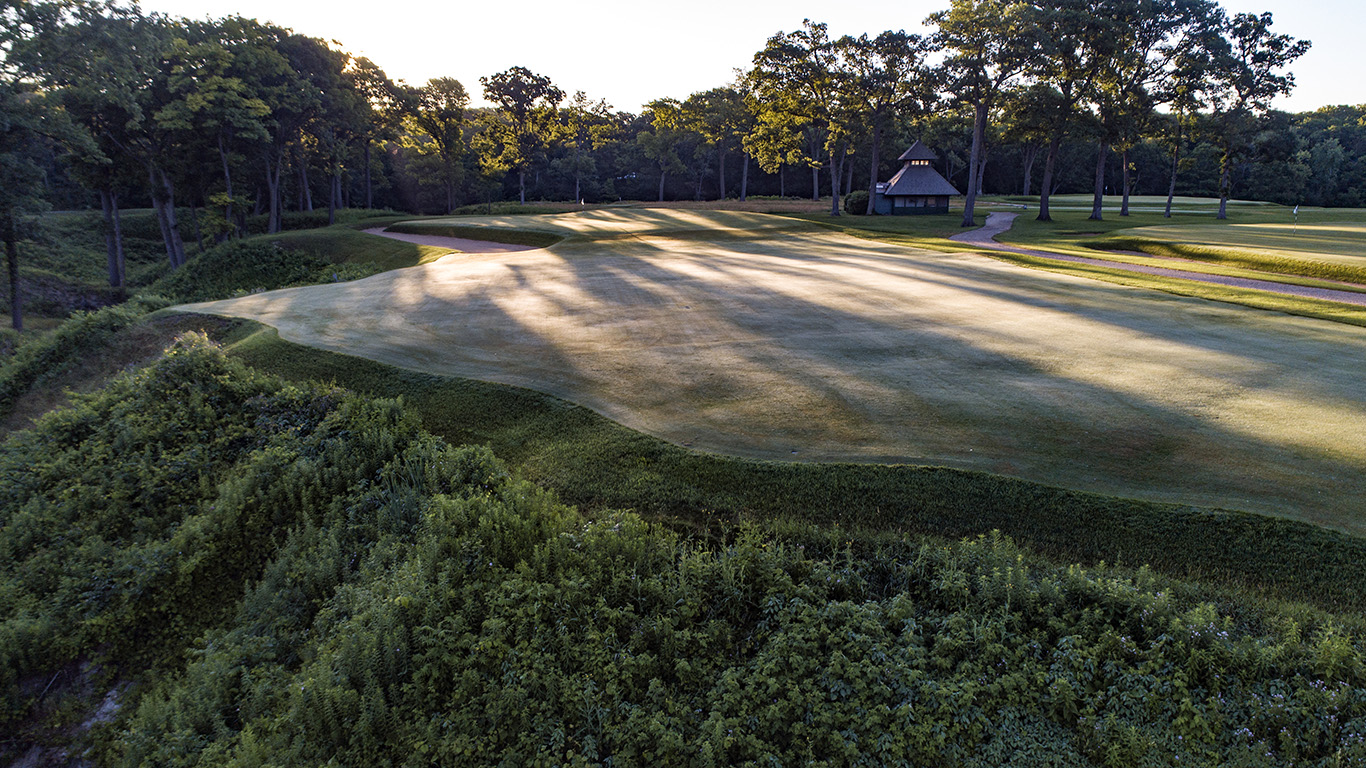
The 14th hole at Shoreacres. Photo credit: Andy Johnson
Shot types off the tee and into the greens
A well-routed, well-sequenced golf course not only asks a player to use a variety of clubs but also rewards the one who can hit a variety of shot types. Some fairways should prefer a left-to-right ball flight, others a right-to-left shape. Some greens might be best approached on the ground, others through the air. This kind of variety both gives the most well-rounded golfers their due and allows a range of playing styles to thrive.
Sites and designs of green complexes
There are so many ways to design a green and its surrounds: why should a course ever repeat an idea? On the best courses, each green complex (that is, the putting surface itself along with the contours and hazards around it) is unique and memorable. A great green can be small or large, subtly contoured or boldly rolling, set on a knoll or in a hollow, a bunkerless expanse or an island of green in a sea of sand. Every green complex should offer a fresh look, feel, and set of strategic questions.
Naturalness
The chief object of every golf architect or greenkeeper worth his salt is to imitate the beauties of nature so closely as to make his work indistinguishable from nature itself. –Alister MacKenzie
An architect will always have a hard time competing with Mother Nature. That’s why the most beautiful golf courses tend to be the ones that are most at home in their settings.
In his 1920 book Golf Architecture, Alister MacKenzie compared this aspect of golf course design to military camouflage. He encouraged golf architects to make their manmade features appear natural and uncontrived, just as camoufleurs render battlefield earthworks indistinguishable from the surrounding landscape. This is a subtle and difficult skill. Today, architects refer to it as “tying in.”
Unsurprisingly, MacKenzie himself was a master of the art. At Cypress Point, the intricate, rugged bunkers fit in with the wild dunescape, the weathered trees, and the craggy coastline.
-
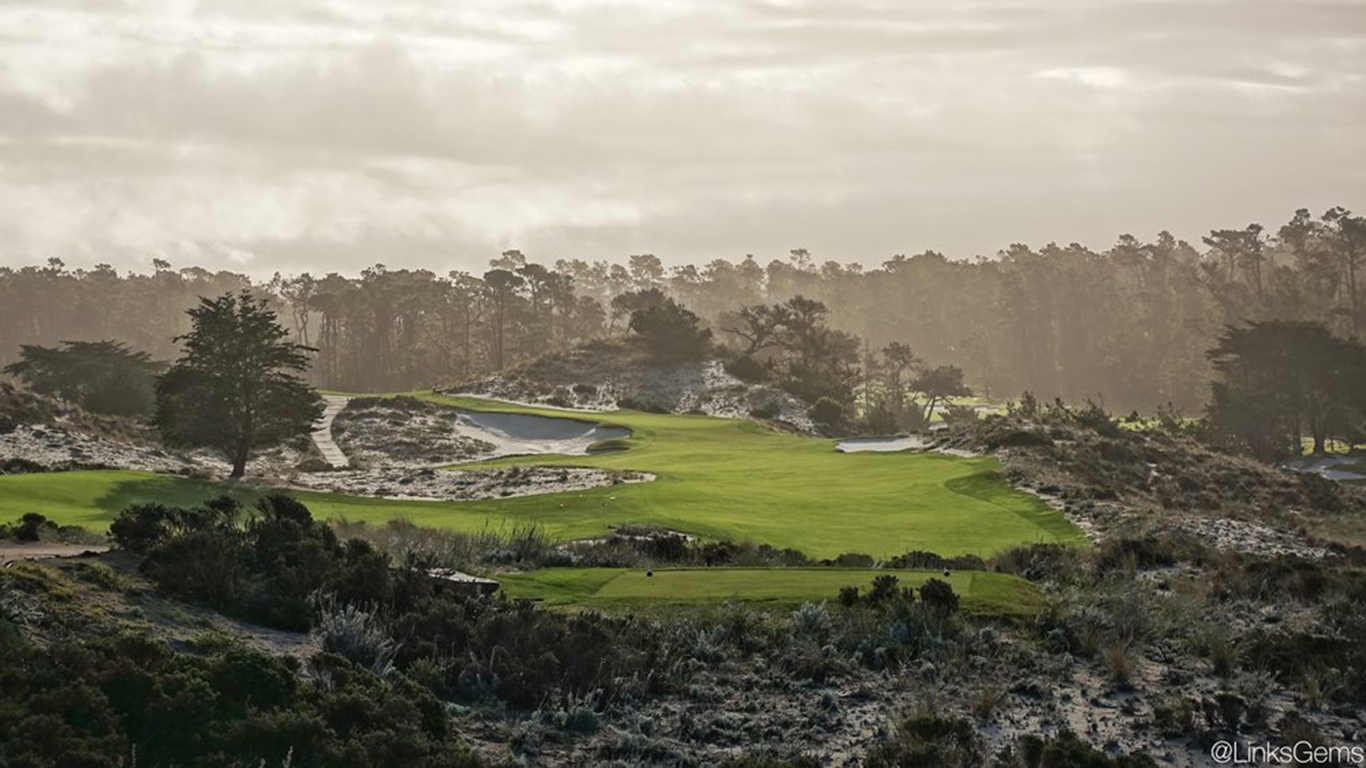
The 9th hole at Cypress Point. Photo credit: Jon Cavalier @linksgems
-
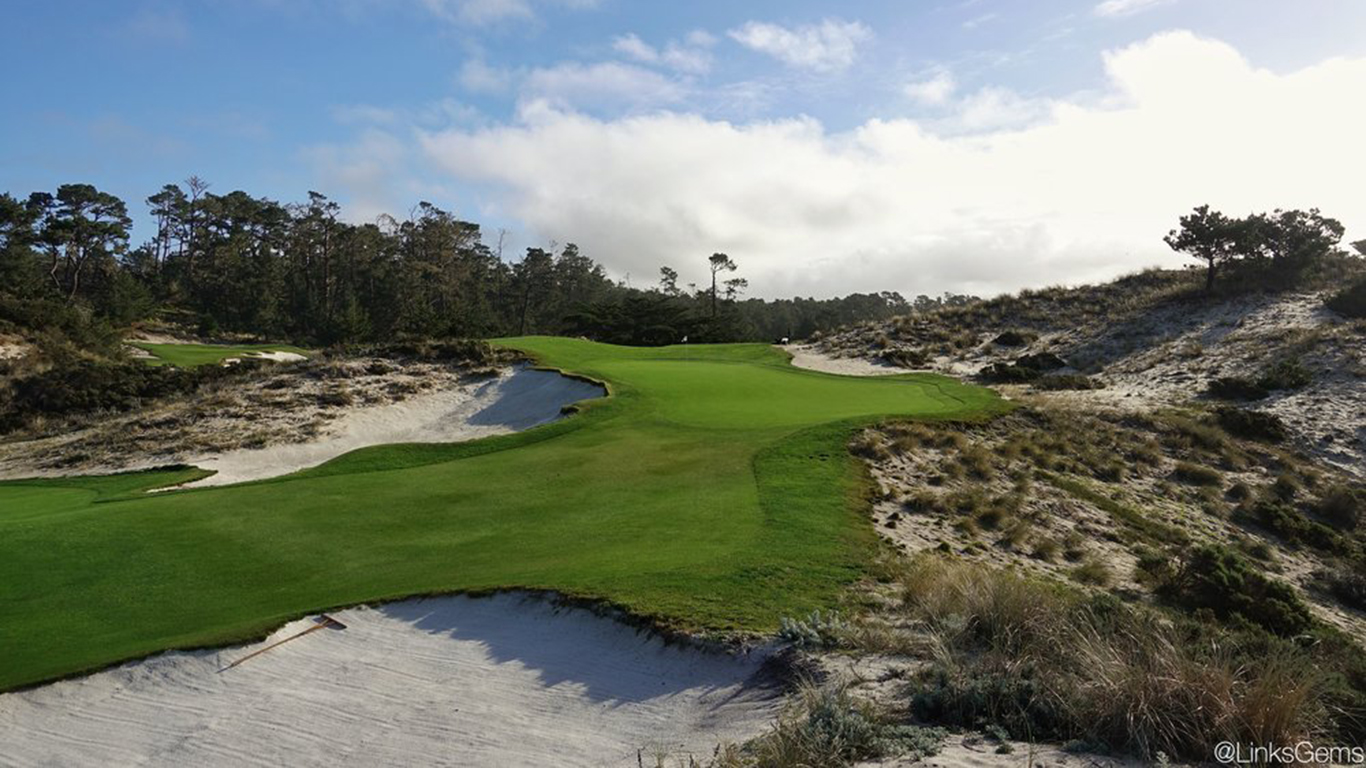
The 9th hole at Cypress Point. Photo credit: Jon Cavalier @linksgems
-
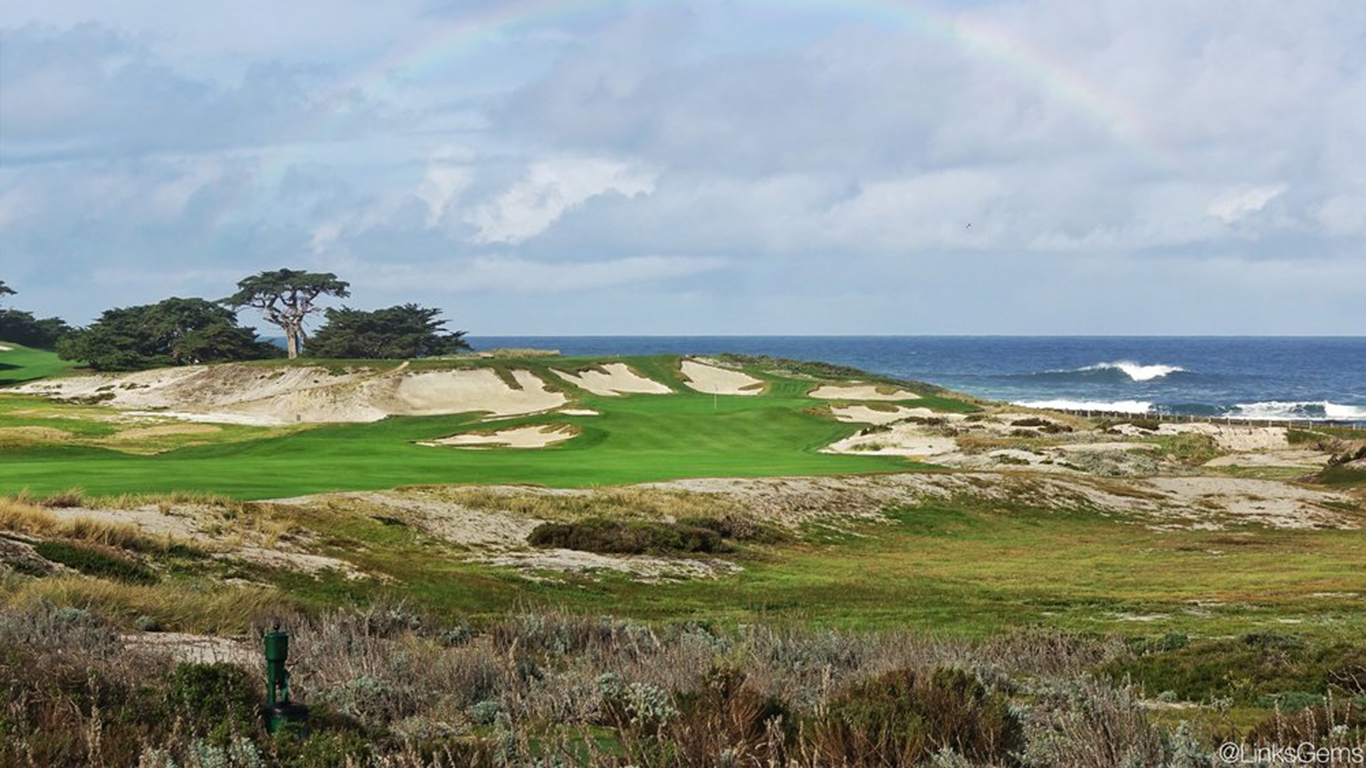
The 13th hole at Cypress Point. Photo credit: Jon Cavalier @linksgems
-

The 13th hole at Cypress Point. Photo credit: Jon Cavalier @linksgems
But I would argue that routing, not artful shaping, is the most important part of the tie-in process. The more a routing uses a site’s natural features to generate fun and varied golf, the fewer changes to the landscape the architect needs to make, and the less camouflage he has to do.
This is why the early links courses of Great Britain and Ireland are so beautifully unified with their settings. The designers did not have bulldozers or dynamite at their disposal, so they focused on finding suitable land and putting holes in the right places. The results have delighted golfers for hundreds of years.
For Part 3 of Golf Course Architecture 101 (on hazards), CLICK HERE.


 by
by 
